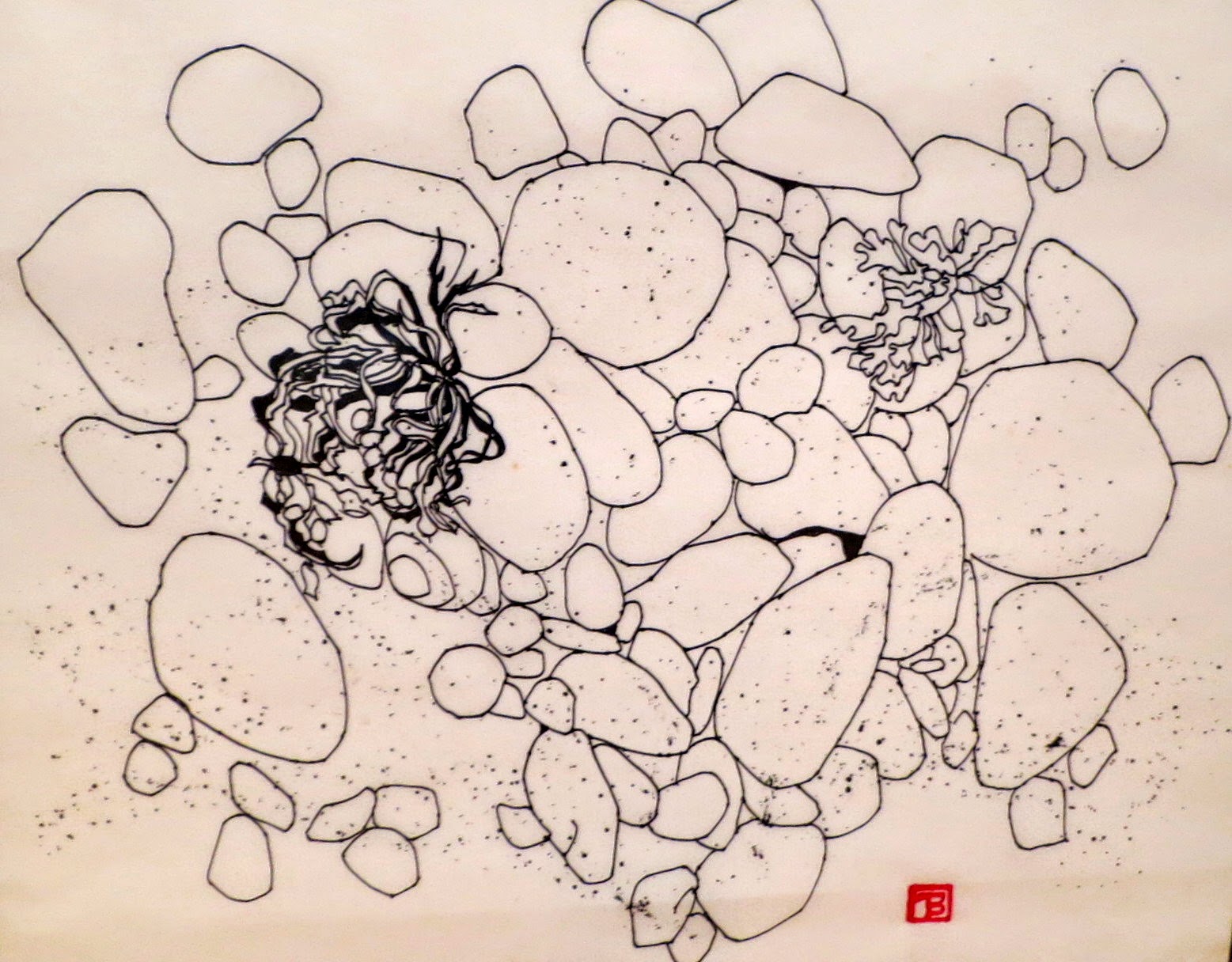In my Craft, or Sullen Art, by Tessa Beaver, at Leamington Art Gallery.
Sweet Chestnut Trees, 2001, (charcoal on paper)
'What I admire about trees is that they show all of their scars so visibly on the outside'.
Glimpse, 1992, (etching)
Interior with Papyrus Plant, 1982, (etching)
Sandform Crab, 1984, (etching)
'I value those simple sandform prints now, because they have an originality, a newness of seeing,... and, true to received wisdom, they hardly sold. I made seven of them (and three much later, as a commission) ... empty but for the embossed corrugations, the pale warmth of the sand colour....'
Tamrack, 1985, (woodcut)
Shadowed Apples, 1989 (etching)
Bracken, 1978 (ink on paper)
Pebbles, 1978, (ink on paper)
September Grief, September Rain, 1999, (watercolour)
These pots were produced by Beaver in the 1990s. One series are moulds of vegetables and these were created using clay slip. The others were hand moulded.
Thalassa I and II, 1987
Cwmystwyth Lead Mine, 1985 (etching)
The Job People woodcuts, 2013
Beaver became immersed for a number of years in the resounding language of Old Testament prophet Job.
The Job People woodcuts are roughly-gouged portraits of current day Syrian refugees. Pointing at images in a Guardian newspaper report of the ruined city of Homs, Beaver remarked: 'These are people's homes. People are being bombed out of their homes and I mind about it. I mind very much'.
No Woman, No Man, 1991 (oil and mixed media on canvas)
'The process I'd developed, of dribbling paint in a way that was only partially in my control, arose out of a need, periodically, to destroy parts of an image before I could carry on... so I found elements emerging that were unexpected. This is essential. Images have to surprise me. If I were to contemplate making an image which I could foresee exactly, what would be the point in actually doing it? The excitement is the risk, the unknown, the hitherto unexpected... As I painted, sometimes a head would wander in and out of gender. One small change can give a face a female or male slant. This was why I called the series No woman, no Man. Gender was perhaps the least important element in the paintings. It was purely, the head, the face of a person with all their depths and ambiguities, that mattered'.
New England series, 1982.





















Wondrous stuff! Thank you for the introduction to this artist.
ReplyDeleteA discovery for me too, Olga. I was very pleasantly surprised when I went to the gallery as the card they had sent me did not give any indication that the work would be so wonderful. She lives in Leamington. She had a stroke recently but feels very lucky that it's the left arm it's affected as she's right-handed, so she can continue working. A very determined woman with a vision.
DeleteI wanted to buy the sand ripples print when I went to the exhibition as it opened but the execution of the printing was far less successful than the one in the frame so I gave up. Think Mervyn has some of her work from his days in Leamington, not sure. I loved the painting of the Italian scene behind the main desk too.
ReplyDeleteWhat a shame about the sand ripples print - I liked that one a lot. I liked most of them in fact. She's very talented.
Delete